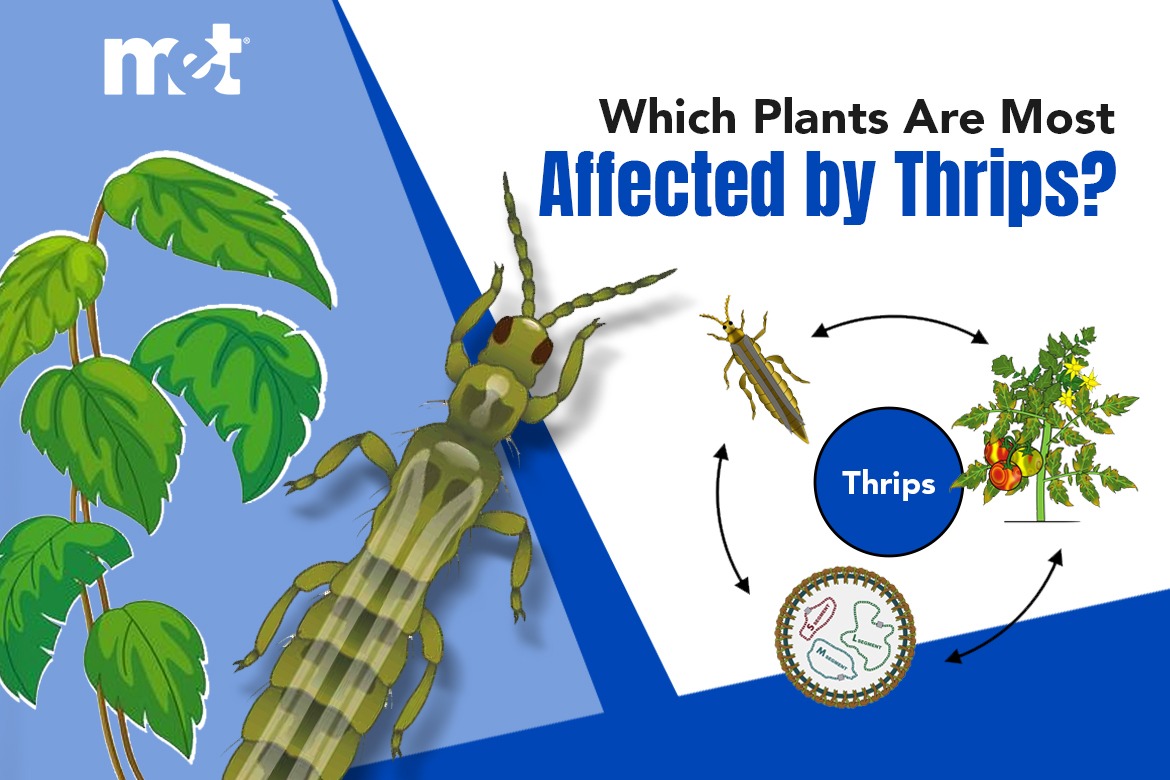Thrips are tiny, slender insects that often go unnoticed—until they start damaging your favourite plants. If you’ve noticed mysterious spots, silvery streaks, or distorted leaves in your garden or home, there’s a good chance thrips are the culprits. As a pest company in Singapore, we at MET service in Singapore deal with a wide range of infestations, and thrips are more common than you’d expect, especially in humid, plant-loving households.
So, which plants do thrips love the most? And what should you do if your green space becomes their playground? This blog breaks it down.
What Are Thrips and Why Should You Care?
Thrips are winged insects, usually less than 2mm long, and they feed by piercing plant cells and sucking out the contents. This feeding habit can leave behind scars, stunted growth, and damaged blooms.
While they rarely bite humans, thrips are a serious threat to plants. And once they multiply, getting rid of them without a proper pest control service can be frustrating. That’s why homeowners often search for “pest control services near me” when dealing with these tiny invaders.
Plants Most Affected by Thrips in Singapore
Singapore’s tropical climate is perfect for lush plants—and unfortunately, perfect for pests too. Here are some of the plants most vulnerable to thrips damage:
1. Roses
Thrips are notorious for ruining rosebuds. They feed inside the buds, causing them to dry out or become misshapen before they even bloom.
2. Chili and Tomato Plants
Home gardeners beware—thrips love edible plants. They can stunt growth and lead to patchy, discoloured fruits.
3. Orchids
Singapore’s national flower isn’t safe either. Thrips feeding on orchids can damage the delicate blooms and reduce flowering cycles.
4. Basil and Herbs
Herbs like basil, mint, and parsley often show early signs of thrips infestation, such as curling or browning leaves.
5. Ferns and Foliage Plants
Houseplants, especially moisture-loving ones like ferns and calatheas, are frequent thrips targets.
If you notice signs of damage on any of these plants, it may be time to call a pest control service near me to help with proper pest removal in Singapore.
How to Spot Thrips Damage
Thrips are sneaky, but their damage is not. Keep an eye out for:
- Silvery or bronze streaks on leaves
- Black dots (their droppings)
- Deformed flowers or buds
- Leaf curling and yellowing
When the infestation grows, DIY methods won’t cut it. Professional pest control services like MET service in Singapore have the expertise and tools to handle the issue from root to leaf.
Why Thrips Are So Hard to Control
Thrips reproduce quickly and often hide in hard-to-reach places like flower buds or under leaves. Many species also develop resistance to over-the-counter insecticides. That’s why many homeowners end up relying on a pest control service in Singapore to effectively manage infestations without harming the plant or the environment.
What to Do if Your Plants Have Thrips
- Isolate Infected Plants: Prevent thrips from spreading to your entire collection.
- Prune Affected Areas: Remove heavily damaged leaves or flowers.
- Keep Humidity in Check: Thrips thrive in dry conditions—misting may help reduce their numbers.
- Call for Professional Help: A licensed pest control service near me will ensure complete pest removal in Singapore using plant-safe methods.
At MET, we understand the unique needs of Singapore’s gardens and indoor greenery. As a trusted pest company in Singapore, we customize treatments to protect both your plants and your peace of mind.
Why Choose MET Service in Singapore?
- Local Expertise: We know which pests are seasonal and how they behave in our climate.
- Safe Methods: We use solutions that are safe for pets, children, and plants.
- Reliable Support: Whether it’s thrips, ants, or cockroaches, our pest control services cover it all.

Don’t wait for pests to become a problem!
For pest solutions and expert advice
Final Thoughts
Thrips may be small, but the damage they leave behind is anything but. From roses to basil, no plant is truly safe without preventive care. If you’re spotting the signs, don’t wait—reach out to a pest control service in Singapore like MET. We’re here to provide efficient, tailored pest removal in Singapore so your plants can thrive again.FAQs
Thrips commonly attack roses, chili plants, tomatoes, orchids, basil, and various houseplants like ferns and calatheas.
Natural enemies of thrips include predatory insects like lacewings, ladybugs, minute pirate bugs, and predatory mites.
Thrips can transmit several plant viruses, most notably Tomato spotted wilt virus (TSWV) and Impatiens necrotic spot virus (INSV).
Some of the worst plant pests include aphids, whiteflies, spider mites, thrips, mealybugs, and scale insects.
Mealybugs often infest succulents, orchids, hibiscus, ferns, and indoor tropical plants like pothos and monstera.
Live predators for thrips include minute pirate bugs (Orius spp.), predatory mites (Amblyseius cucumeris), and lacewing larvae.
Yes, pothos can get thrips, especially when grown indoors in dry environments or near infested plants.
Thrips can infest succulents, particularly when conditions are hot and dry, but they generally prefer plants with tender new growth.

